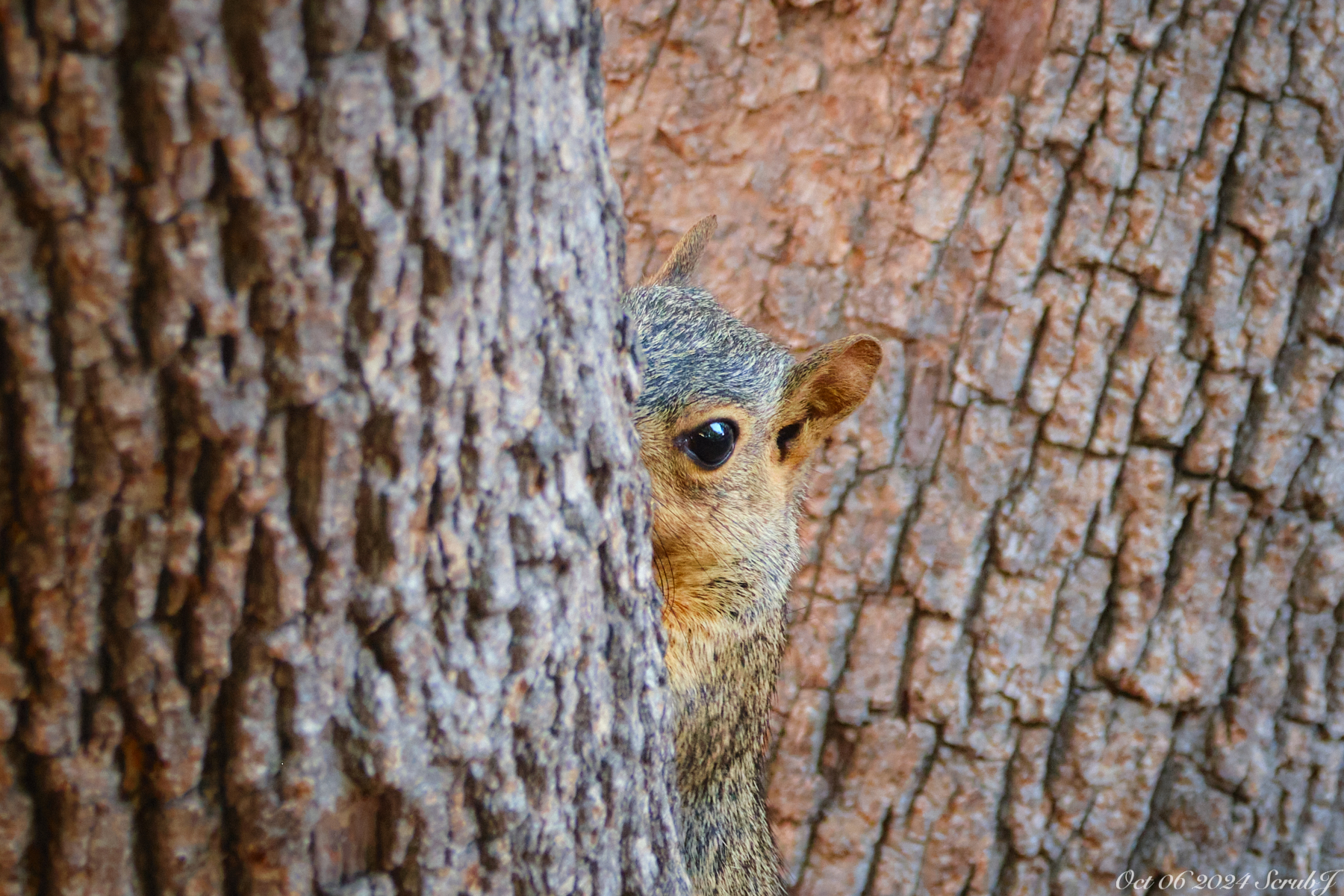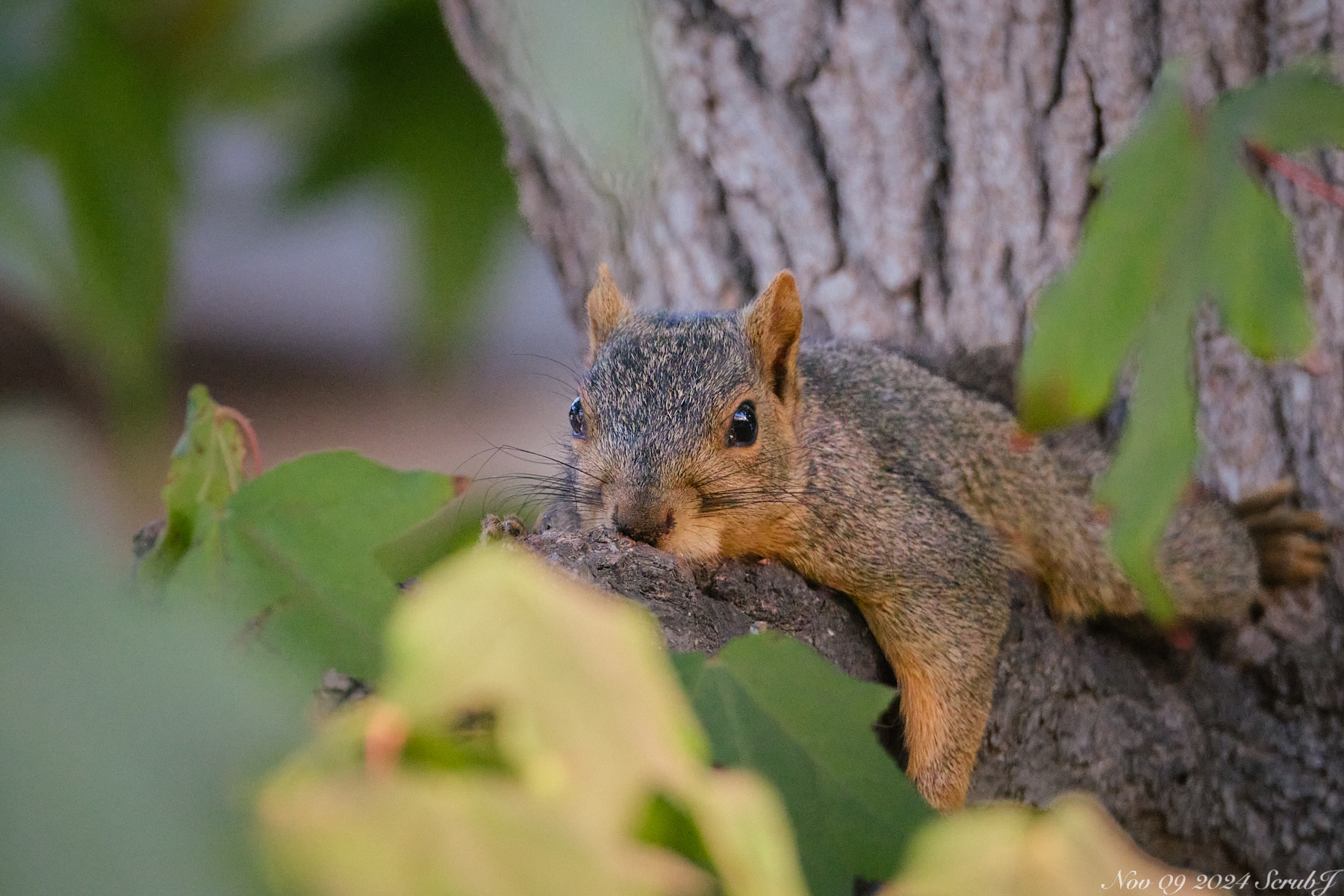Caltech Wildlife: Fox Squirrels



All photos courtesy of Jieyu Zheng.
Some call them cute furry fairies; others regard them as rats with bushy tails. Love them or not, fox squirrels are there every day on the Caltech campus.
Among the mammals of Caltech, they’re arguably the happiest and freest. While Homo sapiens are burdened with homework and deadlines, and coyotes stick to moonlit hours to avoid the crowd, the fox squirrels roam wherever their paws take them. Stroll across campus and you’re guaranteed to spot one: foraging randomly in the grass (no, they don’t remember where they bury their nuts), lounging on a branch, or chasing a friend in spirals around tree trunks, like a dazzling ribbon in the hand of a gymnast. Even if you don’t see one, just look up: the treetops are decorated with their nests, ready for year-round breeding.
Though not native to the West Coast, fox squirrels have become the dominant city-dwelling squirrel in California. They’ve outcompeted local ground and gray squirrels with their larger size and bold attitude. If you pause to watch one, it might instantly detect your gaze, pause what it is doing, approach you without hesitation, and expect a snack. Some even work in teams: while one distracts you with its wagging tail and rearing posture, another would creep up behind you, like a well-trained assassin ready to snap the lunch bag in your hand. This comfort with humans might stem from their Civil War-era origins—brought west as pets by soldiers, their descendants might carry a hint of domestication in their veins.
Their human-friendly nature has earned them many admirers. Over the years, I’ve often seen the same man with a sack of walnuts, visiting at dawn and dusk to knock on trees and summon his squirrel disciples. If you arrive late, you’ll still witness an unusual scene: each squirrel with a nut, settled on a branch and nibbling it slowly. For a few minutes, the campus quiets to the rhythmic crunching of satisfied squirrels—a temporary ceasefire in their endless chase games.
Besides eating, their most common pose is resting. You’ll often see them sprawled belly-down on shaded branches or directly on concrete, cooling off the Southern California heat. Once, I saw a mother squirrel lounging on the BBB stairs while her two babies play-fought in the tree above—perhaps the most relaxed childcare imaginable.
But life isn’t without danger. Coyotes and birds of prey (more on them in a future column) are always watching. Fox squirrels stay alert, using warning calls and rapid tail flicks to signal danger. Their vocalization is louder and more frequent than that of other squirrels, acting as both territorial defense and group alarm. With its dexterous climbing skills, a lucky escapee will scamper up a tall tree and sound the alarm from above, warning the rest of the neighborhood.
The greatest danger these squirrels face, however, may be the roadkill. Unlike Caltech students, they aren’t confident jaywalkers. They often freeze in fear, like typical rodents, which can end tragically. With so many animals—students, squirrels, coyotes, and even peafowl—crossing campus roads, more signage and slower driving could go a long way.
Finally, a gentle reminder: admire these creatures from a distance. Don’t hand-feed them—their vision is not legendary, and they might mistake your fingers for food. This happened to a poor Caltech graduate student I once knew. And please, don’t film it if they do—unless you want the next viral clip to be of your ER visit.